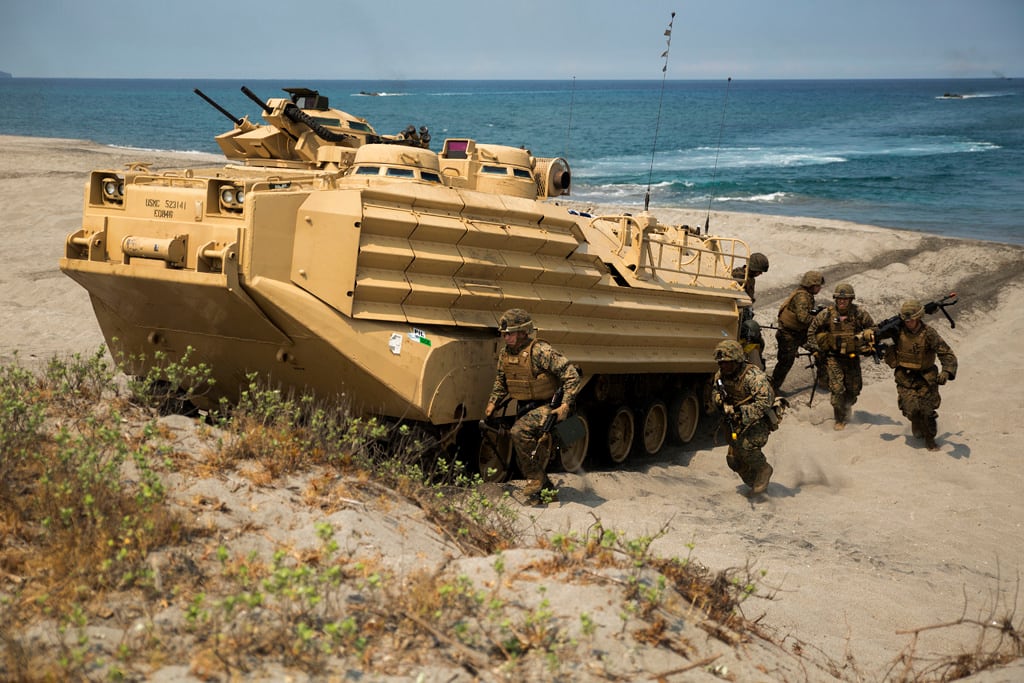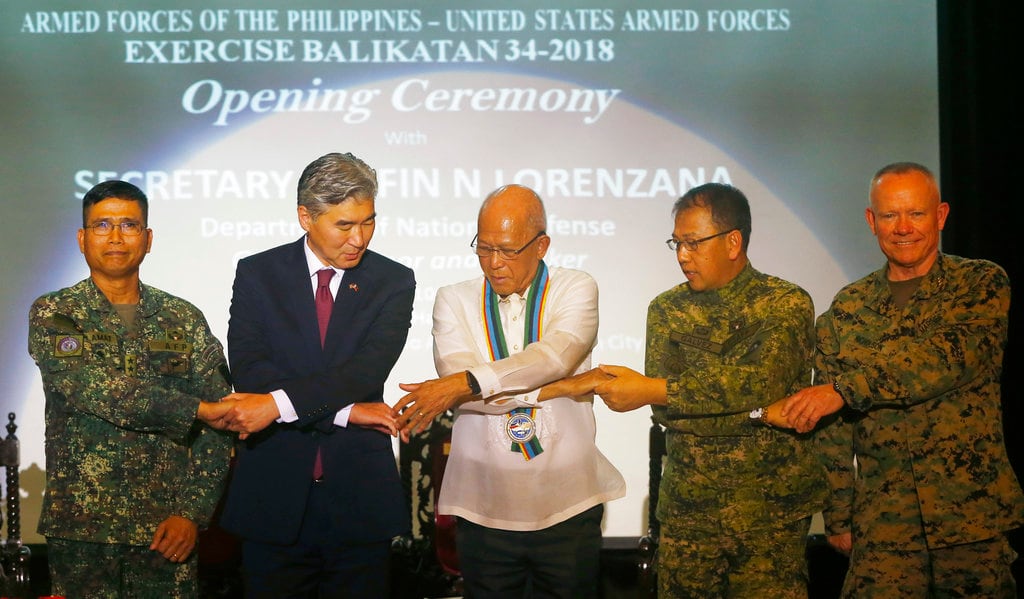MANILA, Philippines — U.S. and Philippine forces on Monday began their largest annual military exercises since President Rodrigo Duterte came to power and vowed to scale down America’s military presence in the country as he sought closer ties with China and Russia.
The Balikatan exercises opened with a ceremony at the main Philippine military camp in Manila, and will to feature about 8,000 American and Filipino personnel and small contingents from Japan and Australia. American and Philippine officials praised the long treaty alliance between the U.S. and its former Southeast Asian colony and then linked arms in a show of solidarity.
The exercises are “just one of many embodiments of our robust relationship,” U.S. Ambassador Sung Kim said. The drills “will continue to reinforce the deep and lasting commitment between our two countries for a peaceful and secure region.”

After taking power in 2016, Duterte vowed to scale back the presence of U.S. troops involved in counterterrorism training in the country’s south and once threatened to end the annual drills with American forces. The volatile leader, who has been critical of U.S. security policies, has taken steps to revive ties with China that had been strained under his predecessor over longstanding territorial conflicts in the South China Sea.
Duterte’s animosity with Washington was partly ignited by U.S. government condemnation of his deadly campaign against illegal drugs, though that criticism has eased under President Donald Trump. A leaked Philippine transcript of a call between the two leaders last year showed Trump praising Duterte’s anti-drug efforts.
Though this year’s Balikatan exercises will be the largest under Duterte, Philippine officials stressed they’re not aimed at China, but at the threat of urban terrorism and other man-made crises and natural disasters.
In addition to amphibious beach landings, live-fire maneuvers and disaster-response scenarios, the exercises will involve combat drills in mock urban settings to train special forces in battling terrorists in cities as they did during the Islamic State group-linked siege on southern Marawi city last year.
“We want both our forces to learn from our great and hard-earned experience in our past battles like Marawi,” said Marine Lt. Gen. Emmanuel Salamat, who leads the Philippine contingent. “We just want to help each other to be able to effectively combat future scenarios.”

Hundreds of Filipino militants and allied foreign fighters seized the business district and residential areas of lakeside Marawi on May 23 last year, occupying buildings and homes and forcing hundreds of thousands of residents to flee to safety.
Despite initial difficulty because of their unfamiliarity with urban warfare, Filipino troops quelled the insurrection with airstrikes, artillery fire and ground assaults after five months with the help of U.S. and Australian surveillance aircraft.
The siege left more than 1,100 people dead, mostly militant gunmen, including the Islamic State group’s Southeast Asian leader and top Asian militant suspect Isnilon Hapilon. The attack deepened fears among Asian and Western governments that the group was bringing its violent extremism to Asia after facing major battle defeats in Syria and Iraq.
“Our job is to be ready whether that threat is man-made or whether that threat is mother nature,” Marine Lt. Gen. Lawrence Nicholson said. “We have to be ready to respond.”
